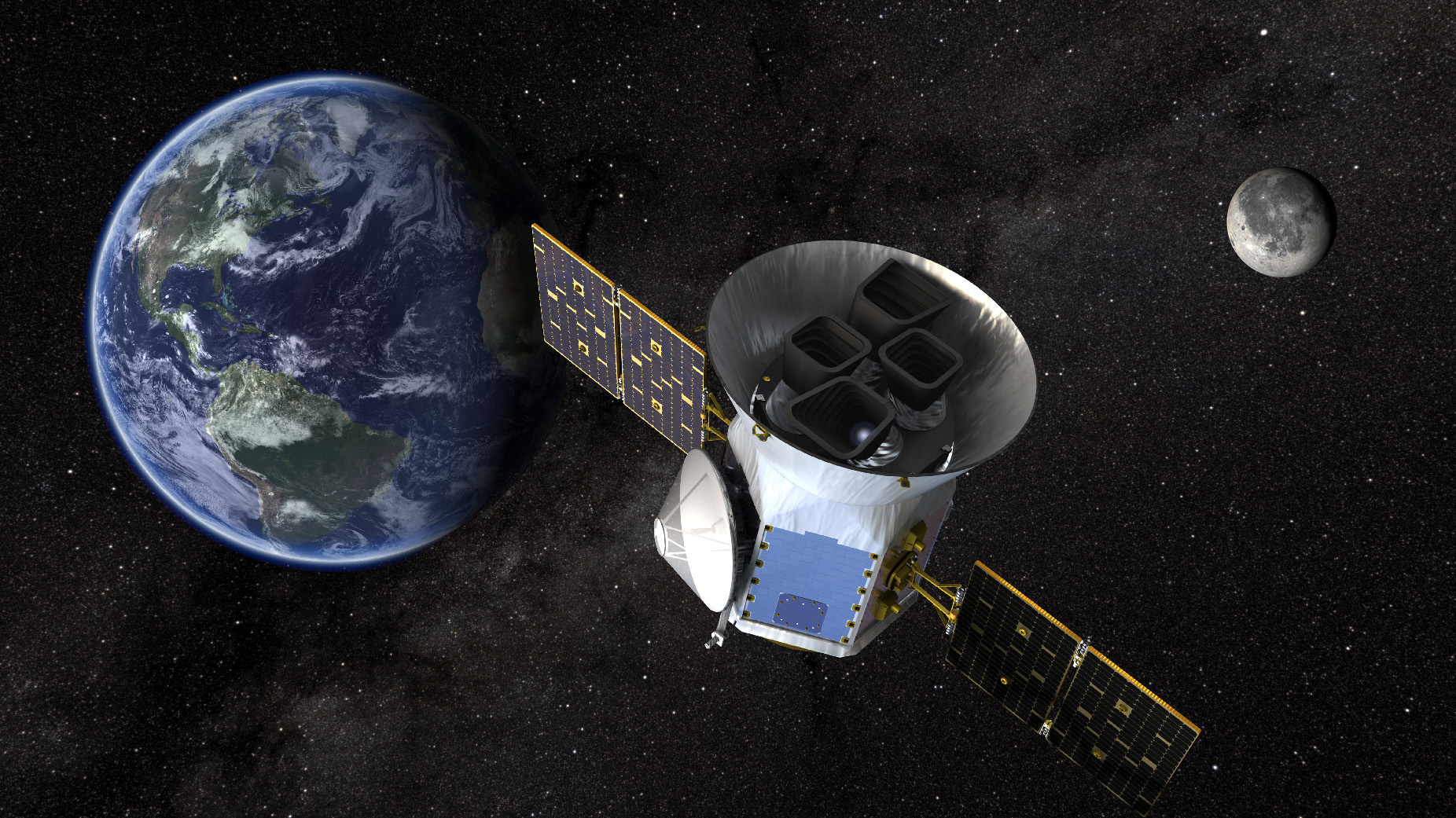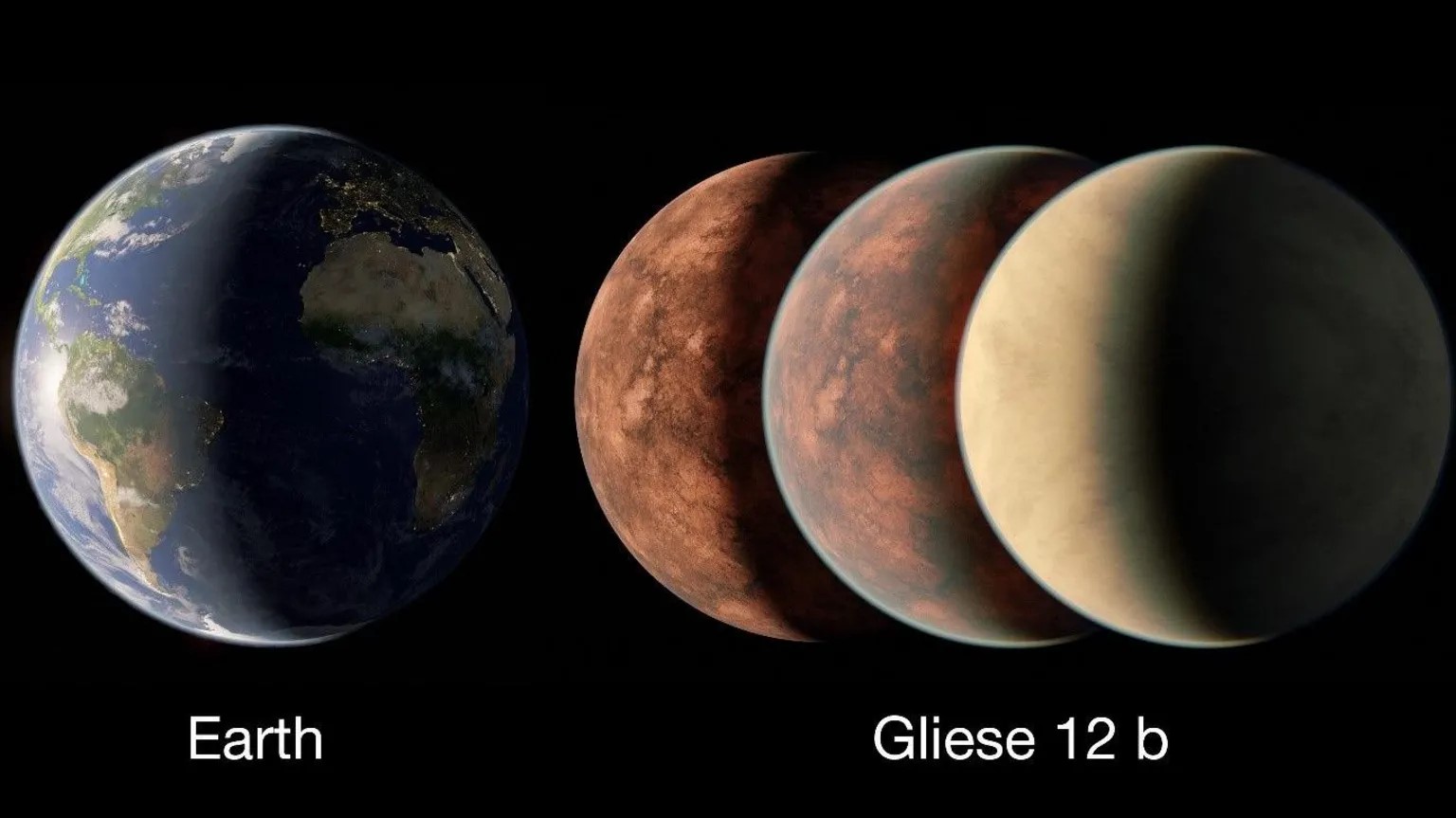Transiting Exoplanet Survey Satellite (TESS)

- 05 Apr 2025
In News:
- An international team of astronomers, using NASA’s TESS mission, has discovered a new warm Jupiter-type exoplanet located over 1,000 light-years away.
- “Warm Jupiters” are gas giants that orbit their stars at moderate distances, experiencing higher temperatures than Jupiter but cooler than “hot Jupiters”.
About TESS (Transiting Exoplanet Survey Satellite)
- Launched: March 2018 by NASA.
- Objective: To discover thousands of exoplanets (planets outside our solar system) by observing the brightest dwarf stars in the sky.
- Successor to: NASA’s Kepler Space Telescope, which pioneered large-scale exoplanet discovery (2009–2018).
Working Principle:
- TESS uses the transit method:
- It monitors periodic dips in star brightness, caused when a planet crosses (or transits) in front of its host star.
- This reveals the size (diameter) of the exoplanet and helps estimate its orbital characteristics.
- Helps identify habitable zone planets, where liquid water may exist on Earth-like worlds.
Mission Highlights:
- Prime Mission Duration: Two years, completed on July 4, 2020.
- Covered nearly 75% of the sky, divided into 26 sectors.
- Discovered 66 confirmed exoplanets during the prime mission.
- Now operating under an extended mission, continuing to explore distant planetary systems.
- Finds planets of varied sizes and compositions, from rocky Earth-like bodies to gas giants.
Gliese 12b

- 25 May 2024
Why is it in the News?
Recently, scientists have discovered a new planet that they say could "potentially support human life."
What is Gliese 12b?
- Gliese 12 b is a rocky planet just 40 light-years away from Earth.
- It orbits around a star called Gliese 12, a cool red dwarf in the constellation Pisces.
- This star is only 27 per cent of the size of our sun, with about 60 per cent of its surface temperature.
- But it's this lower temperature that makes Gliese 12 b theoretically habitable for humans.
- Gliese 12 b is one of the few known rocky planets where humans could theoretically survive according to scientists.
- The planet was discovered by an international team, in collaboration with NASA and the European Space Agency, using data from NASA's Transiting Exoplanet Survey Satellite (TESS) and ESA's Characterizing Exoplanet Satellite (CHEOPS).
- Gliese 12 b falls into this "Goldilocks zone," with an average temperature of 107 degrees Fahrenheit and a size somewhere between Venus and Earth.
- The researchers hope that by learning more about Gliese 12 b's atmosphere we may be able to answer questions about the evolution of our own solar system and other habitable planets.
About the Transiting Exoplanet Survey Satellite (TESS):
- TESS is a NASA mission dedicated to discovering exoplanets around nearby bright stars.
- It was launched on April 18, 2018, aboard a SpaceX Falcon 9 rocket from Cape Canaveral.
- TESS operates in a unique high Earth orbit with a period of 12 to 15 days.
- This orbit is designed to keep the telescope's view largely unobstructed by Earth and the Moon.
- The prime mission concluded on July 4, 2020, but TESS continues to operate on an extended mission.
- TESS has identified a wide range of exoplanets, from small rocky worlds to giant planets, highlighting the diversity of planetary systems in our galaxy.
- TESS uses the transit method to find exoplanets. It monitors stars for periodic dips in brightness, which occur when a planet crosses in front of the star along our line of sight.
- The size of the dip indicates the planet's diameter and the duration of the transit provides information about the planet's orbit.
- The transit method allows scientists to determine the diameter and orbital size of exoplanets.
- Orbits within certain ranges fall into the "habitable zone," where conditions may allow liquid water to exist on the surface of Earth-like worlds.
